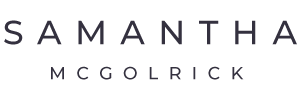#9 Applying An Accounting Lens to WHS Performance Reporting [FREE Sample Board WHS Report]
-
#9 Applying an Accounting Lens to WHS Performance Reporting – DOWNLOAD A SAMPLE BOARD WHS REPORT
This week I explore the two biggest problems I’ve seen in board WHS performance reporting and share a suggested framework that will assist board members in making strategic decisions and complying with their due diligence obligations.

BOARD WORKPLACE HEALTH & SAFETY PERFORMANCE REPORTING
This week I had planned to post Part 2 of a 3-part series for directors on investing in mental health; however, in line with the end of quarter and boards reviewing quarterly results, I thought it timely to step back and take a look at board workplace health & safety (WHS) performance reporting. To do so, I’m have summarised a report published approximately one year ago by Safe Work Australia. The report was the result of a 3-year study into the role of accounting in WHS performance. The study has provided us with a set of suggested of indicators for WHS performance reporting for various levels of responsibility, stakeholders and organisational maturity – however, note that these indicators are not mandatory, but they are a big step in the right direction towards standardised reporting.
WHY BUSINESS LEADERS SHOULD READ THIS POST
The two biggest problems I’ve seen in board WHS performance reporting are: the reporting doesn’t assist the board in making strategic decisions nor does it assist directors in compliance with their due diligence duties, specifically the due diligence obligations in the Australian/New Zealand workplace health and safety legislation. However, regardless of where you are in the world, whether or not you have a legislative obligation to exercise due diligence under your WHS legislation, if you are a director, the following framework for reviewing your WHS performance will be useful. While some of you may be comfortable that your reports are assisting you with the above, I still encourage you to read this post as I drill down into what directors should be looking at and why. I have also provided a sample board report as a free resource for today’s post.
NO STANDARDISED INDICATORS FOR MONITORING WHS PERFORMANCE
Currently there is a lack of standardised and accepted indicators to measure the WHS performance of organisations and businesses at the organisational level … and this is true globally. Think about that for just a second … there is no equivalent ‘gross profit margin’, ‘net profit’, or ‘current ratio’ in WHS performance reporting to measure and compare a business’ success in managing its health & safety. You may be thinking, what about injury rates such as lost time injuries? In a previous post (#4: Out with the Old (LTI), In with the New (injury and illness classifications) I discussed the clear pitfalls of relying on one-dimensional injury data such as lost-time injury frequency rates, not to mention there is no standard definition for a LTI which makes comparing data very difficult, if not worthless. It’s not all bad news though, WHS performance information can and is being reported on a voluntary basis, but reporting is often selective and inconsistent. This hinders comparisons of WHS performance and due diligence reporting over time and across organisations. As a result of the 3-year study into the role of accounting in WHS performance, we now have a set of suggested indicators for WHS performance reporting for various levels of responsibility, stakeholders and organisational maturity – although they are not mandated, it’s a step in the right direction. The 3-year study found:
- Medium-large entities are initiating risk mapping exercises to identify and integrate WHS risk into broader corporate risk management practices.
- WHS due diligence training for most officers was focused on legal exposure and failed to inform their general understanding of WHS or how their decisions influence WHS outcomes.
- Accountants tend to view WHS from a ‘siloed’ rather than integrated perspective and identify only direct WHS costs (e.g. compensation).
- WHS assurance practices vary widely. Many organisations are struggling to address the due diligence requirements for verification.
- WHS performance data is generally inadequate for effective decision-making, yet accountants do not readily lend their expertise to aid the innovation in non-financial WHS performance measures that could assist verification, guide strategy and better inform WHS decision making.
- Many accounting practices (procurement, resource allocation) do not include the adequate internal controls or consultation mechanisms required to ensure due consideration of the likely WHS outcomes.
Hence the need for a set of standard indicators.
Global Reporting Initiative 403: Occupational Health & Safety
Some of you may have heard of the Global Reporting Initiative (GRI), an international independent standards organisation that pioneered sustainability reporting. GRI helps businesses and governments worldwide understand and communicate their impact on critical sustainability issues such as climate change, human rights, governance and social well-being. The GRI Standard 403: addresses the topic of occupational health & safety impacts. The Standard outlines required and recommending reporting, but in itself is still voluntary reporting. While the GRI reporting does include reference to workplace injuries and illness, such as:
- The number of fatal work-related illnesses
- The number of recordable work-related illnesses
- A list of the main types of work-related illness.
and allows for international businesses to benchmark their impact on society, it is not a comprehensive list of indicators that will assist directors in their compliance obligations or in strategic decision-making.
CRITERIA FOR CHOOSING YOUR REPORT CONTENT
When selecting information to include in WHS reports, you should consider: the relevance for decision-making; data quality (reliability and validity); and cost effectiveness.
- Relevant: data is useful for informing decisions on issues that matter to the business or undertaking.
- It is material; of a size or importance that leaving it out makes a difference to the report user.
- it is attributable; allows managers to take action that can influence results.
- It is timely; relates to current performance.
- Reliable: data is accurate and unambiguous, free from error and free from bias.
- It can be measured consistently, making it comparable both over time and across organisations.
- It is clearly defined, easily understood and readily interpreted by users.
- Valid: data measures what it purports to measure. This means a measure has:
- Statistical validity; the data mathematically captures what the description says it captures.
- Face validity; is generally accepted as ‘fit for purpose’ (i.e. seen as fair by staff and managers (or stakeholders)).
- Cost effective: the cost of collecting the data does not outweigh the usefulness of that data.
Note: including information (data) that is immaterial in a report will actually reduce the report’s usefulness because the data does not add value, but instead adds noise and can obscure important messages.
DIRECTORS NEED TO KNOW …
While operational management require timely data on WHS risk and performance, such as implementation and effectiveness of WHS controls and initiatives, board performance reporting needs to provide relevant and material information that will inform strategic decisions and assist director’s in compliance with their legislative obligations. Under the Australian model Work Health & Safety Act (model WHS Act) (enacted in all Australian states and territories, except Victoria and Western Australia), directors are, by default of their position, considered officers, and are therefore required to exercise due diligence to ensure that the business or undertaking complies with its health and safety duties. There are six due diligence obligations in the model WHS Act that ensure that WHS considerations are integrated seamlessly into an organisation’s business model, particularly into its decision-making processes. Board reporting should provide directors with information on risk management and assurance as to the implementation and success of WHS strategy, WHS policy and internal controls. Specifically, reporting should cover:
- Information about how up-to-date an organisation’s WHS risk picture is: involving officers constantly refreshing their knowledge of general WHS concepts and practices and their understanding of WHS risk associated with the business enterprise
- Data relating to WHS performance: understanding processes of hazard identification, prioritisation and risk control, and the outputs of the WHS performance management system.
- Information relating to oversight and assurance: the verification of legal compliance and the implementation and effectives of managerial and resource allocation processes needed to eliminate or minimise risk.
SIMILARITIES BETWEEN FINANCIAL REPORTING AND WHS REPORTING
One of the best ways I’ve seen WHS performance reporting summarised for leaders is in the table below, which provides a comparison of WHS performance reporting and financial reporting. The concept is, just as financial reporting provides essential information about the financial performance (i.e. ‘profit and loss’ over a period) and position (i.e. ‘balance sheet’ at a point in time) of the business, WHS reporting should provide a clear understanding of the business:
- WHS performance (i.e. actions and outcomes over a period) and
- WHS position (i.e. health and safety at a given point in time).
The table below summarises these two perspectives: 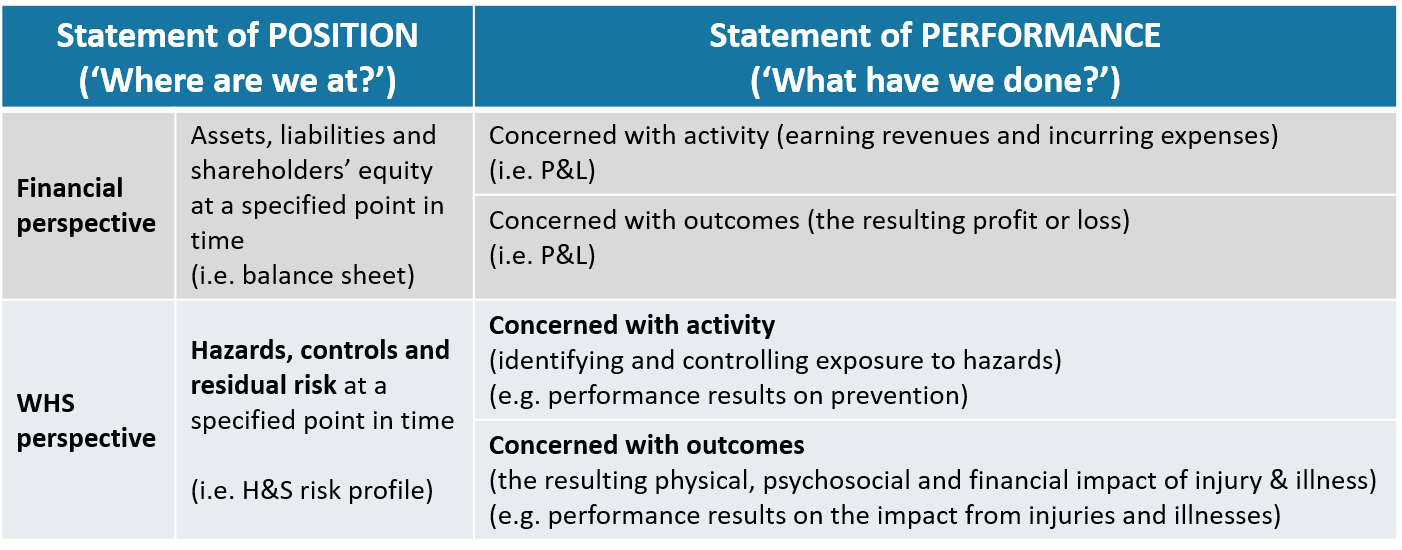 Image adapted from Safe Work Australia
Image adapted from Safe Work Australia
SUGGESTED FRAMEWORK FOR BOARD REPORTING
It’s important to note that while I will outline the framework proposed by O’Neill & Wolfe, on behalf of Safe Work Australia, that you can use to identify your board reporting indicators, each organisation needs to identify and use the lead and lag indicators that can best inform the particular challenges and issues it faces – use the WHS Position and Performance as a guide and check out the FREE RESOURCE for today’s post which is a sample board report. In addition, much of your reporting will be shaped by your organisation’s culture – the more mature the reporting; the more mature the organisation’s approach to the management of health & safety. There are four categories for Board WHS peformance reporting:
Category 1: WHS risk picture
This section aims to ensure directors are apprised of specific and significant changes in: WHS regulation, technologies, practices (relevant WHS matters), and organisational hazards and risks (organisational risk profile).
- Indicators of change: where significant structural change, financial constraints, growth or downsizing is occurring, the likely impact on WHS should be highlighted/discussed. This may include discussion of a formal risk assessment, consultation plan, implementation plan.
- Relevant information may be sourced internally (e.g. via inspections, audits or incident analysis), or externally (e.g. from scanning legal, WHS and news sources). Information may be quantitative and/or qualitative.
Note: The board’s focus is on material issues. Materiality is a key consideration in determining which issues are significant in terms of risk and/or cost should be reported to the board, and those that should instead be updated in the risk register (to which the board has access) and addressed by management. At a minimum, this section of the board report should always include:
- ‘New top 3 (or 5)’ – To raise awareness and due consideration of emerging threats or examples of potentially significant regulatory/operational issues identified via external scanning. KPIs may be included for context.
- ‘Our risk update’ – To raise/maintain awareness of the organisation’s critical risks and highlight any significant changes in the organisation’s injury or risk profile. Keep explanations brief.
Board training issues may be flagged in this section, as and when necessary. For example, when a board member has not completed a WHS induction, or where identified an important training was scheduled but had not been delivered.
Category 2: WHS position
This section provides information about the state of ‘health and safety’ of the organisation at the end of the period. That is, the status of risks, controls and residual risk regarding the implementation and effectiveness of WHS policy and strategy, including those relating to the allocation of financial and human resources. This section should summarise the organisation’s success in meeting its obligations to ensure workers’ health and safety. Critical here are KPIs relating to critical controls that seek to eliminate or minimise WHS risk or reflect event reports (ERs) that remain unresolved at the end of the month (aged, if possible).
- Indicators of critical defences: lead and lag indicators of selected critical risk-control activities. It is important to focus primarily on significant changes and new risks, not to simply replicate every available measure from the WHS managers’ report in the board report. Where notable changes in risk or performance are rare, the board report might include a lead and lag indicator of a few different critical defences each month.
I recommend the Bowtie approach to identify your critical risks and supporting preventative and mitigating controls. 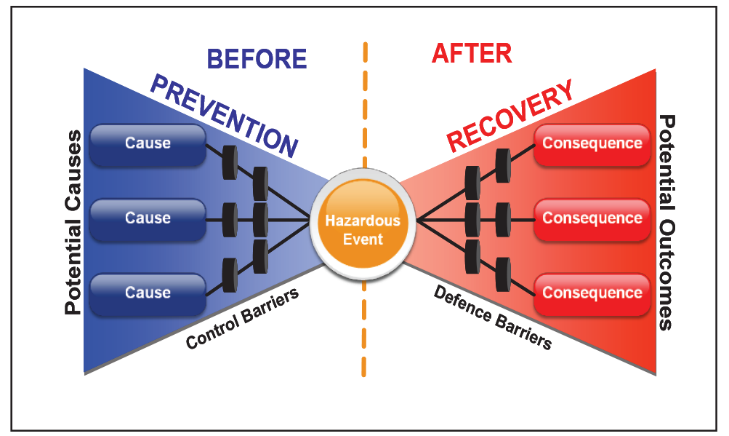
Category 3: WHS performance
This section should summarise the business’ risk management efforts and the subsequent injury and illness outcomes. That is, its success in meeting its obligations to deliver the resources and processes needed to ensure workers’ health and safety.
- Injury/illness: the number of actual injury cases, by severity (not an aggregated injury rate) is appropriate. This allows officers to make informed assessments about different aspects of WHS impact and reinforces that each and every recordable injury represents a failure to ensure WHS.
Carefully prepared tables, bar charts or graphs can ensure injury data is both concise and useful.
- Risk elimination or minimisation efforts: information about the actions taken to identify and eliminate hazards/minimise risk. May include KPIs/details relating to the implementation of WHS programs, initiatives, controls etc, climate survey results, incidents investigated and / or event reports (ERs) closed during the period. (For example, this could include a graph of ERs closed with categories reflecting the ‘hierarchy of control’ levels that applied to those solutions.)
- Indicators of safety inspections: include activity and outcome details for internal or external performance audits and inspections (e.g. KPIs relating to ‘opportunities for improvement’ identified or metrics such as average safety inspection conformance).
- Financial indicators: of the success or failure to ensure WHS compliance. This includes regulatory fines and penalties and updates on legal fees, workers’ compensation and (self-insurer) medical costs relating to Class 1 injury or illness (see my post #3 Out with the Old Injury (LTI), In with the New Injury Classifications).
Other direct or indirect costs may be included if desired. Where trends in compensation costs are stable over time a short sentence may suffice. For example, “compensation claims, and costs are unchanged at 3 and $19,000/ month.” Note: KPIs such as LTIFR and total lost workdays may be included here, particularly if total days lost includes a range of non-productive time (e.g. days lost to injury or illness, absenteeism and sick leave), although it should be clear that these measure lost productivity not injury, nor safety – again see my post #3.
Category 4: WHS assurance
This section provides assurance regarding the systems that seek to ensure WHS. KPIs relate to governance processes (rather than management processes):
- Indicators of critical defences: lead and lag indicators of selected critical risk-control activities.
It is important to focus primarily on significant changes and new risks, not to simply replicate every available measure from the WHS managers’ report in the board report. Where notable changes in risk or performance are rare, the board report might include a lead and lag indicator of a few different critical defences each month.
- Indicators of audits and assurance: include activity and outcome details for internal or external compliance audits or external, for example KPIs relating to ‘opportunities for improvement’ identified or metrics such as average safety inspection conformance.
Later in the year, I will look to review indicators for external reporting, such as those indicators you should provide in your annual and sustainability reporting. If you want to stay informed, subscribe to my Newsletter HERE and you’ll be the first to know when it comes out. Now it’s your turn: What indicators are included in your board reports that help the board make strategic decisions or comply with director due diligence obligations? Leave a comment below and let me know. Remember, your story and/or thoughts may lead to someone’s meaningful breakthrough and it all contributes to this audience knowing What to Ask, and When to Act #knowWTA Important: share your thoughts and ideas directly in the comments. Links to other posts, videos, etc. will be removed. Thank you so much for adding your perspective to the conversation! Thanks for reading!


Welcome!
I’m Samantha
I teach board members and executives how to lead with heart and put people first, by leading safe & healthy work. Stick around and I’ll share with you the skills, knowledge and mindset you need to know what to ask, and when to act and lead with confidence.
RESOURCES
YOU MAY ALSO LIKE…
FEATURED CONTENT
[text-blocks id=”4249″ plain=”1″]
RELATED POSTS
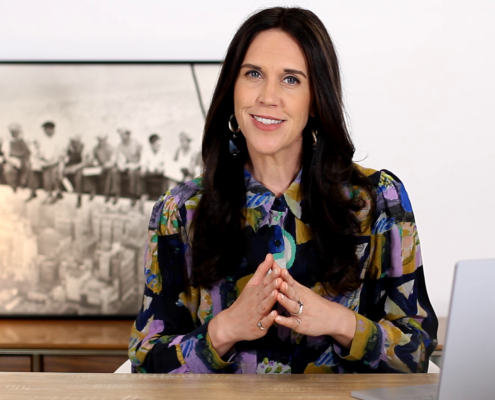
#39 Your Board Might be Missing Red Flags. This is Why
Culture, Director, Lead By Example, Remove the Excuses, Systems
https://www.samanthamcgolrick.com/wp-content/uploads/2020/12/vlcsnap-2020-12-02-09h42m14s707.png
844
1500
Samantha McGolrick
https://www.smsafetysolutions.com.au/wp-content/uploads/2019/01/samantha_logo.png
Samantha McGolrick2020-12-02 09:18:082023-02-20 20:50:35#39 Your Board Might be Missing Red Flags. This is Why
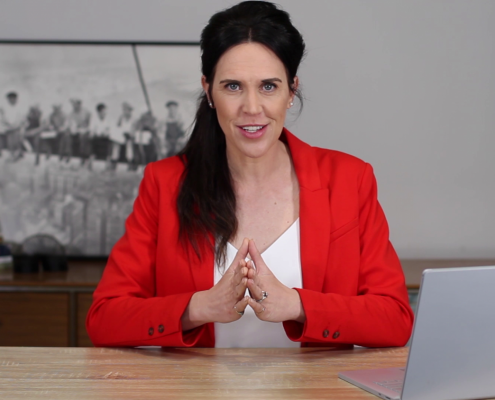
#38 What Does the Dreamworld Tragedy Tell Us About Board Competency in Safety (Part 2)
Director, Lead By Example, Leading Safe & Healthy Work in the Boardroom, Remove the Excuses, Systems
https://www.samanthamcgolrick.com/wp-content/uploads/2020/09/Vlog-38-Dreamworld-Part-2-screenshot.png
844
1500
Samantha McGolrick
https://www.smsafetysolutions.com.au/wp-content/uploads/2019/01/samantha_logo.png
Samantha McGolrick2020-09-02 09:00:082023-02-20 20:50:28#38 What Does the Dreamworld Tragedy Tell Us About Board Competency in Safety (Part 2)
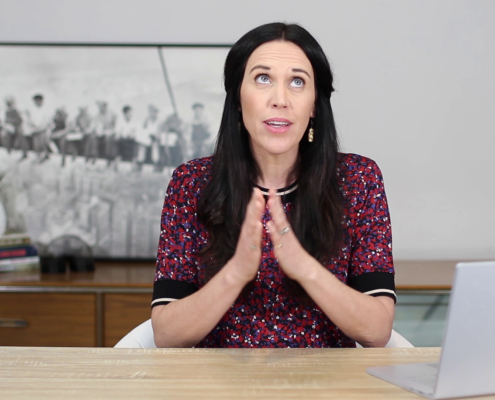
#37 What Does the Dreamworld Tragedy Tell Us About Board Competency in Safety (Part 1)
Director, Lead By Example, Leading Safe & Healthy Work in the Boardroom, Remove the Excuses
https://www.samanthamcgolrick.com/wp-content/uploads/2020/08/screenshot.png
844
1500
Samantha McGolrick
https://www.smsafetysolutions.com.au/wp-content/uploads/2019/01/samantha_logo.png
Samantha McGolrick2020-08-26 17:27:592023-02-20 20:50:15#37 What Does the Dreamworld Tragedy Tell Us About Board Competency in Safety (Part 1)
#8 Investing in Mental Health is a Healthy Investment – Part 1: The ROI
This is Part 1st in a 3-part series of posts that will assist directors in their governance and leadership responsibilities to lead and govern mental health in the boardroom. The focus of this post is to better understand ‘what is mental health’ and how it can have a positive impact on your company’s bottom line.
#7 How To Leverage Workplace Health & Safety To Build Trust in Your Organisation
Trust should not be mistaken as simply a soft, social virtue; rather it is a truly hard, economic driver for every organisation. Ongoing trust-building activities should be one of the most important strategic priorities for every organisation. As workplace health & safety is a unifying point of collaboration in any business, it is the perfect catalyst for leadership to build trust in their business.
#6 2018 Director Health and Safety Dashboard [FREE DOWNLOAD]
-
#6: 2017 in Review: What every director should know for their 2018 Health & Safety Dashboard

2017 In Review
Last November I attended the Essential Director Update for 2017, hosted by the Australian Institute of Company Directors (AICD). The event informs members of critical changes to governance, business and regulatory landscapes in the last year, that impact director duties and responsibilities. The AICD also provides this update in print – the AICD Essential Director Update.
The keynote speaker for the event was company director, Graham Bradley AM, who, amongst the update, highlighted a rundown of five issues that will dominate the Director agenda in 2018.
WHY BUSINESS LEADERS SHOULD READ THIS POST
With four workplace deaths, on average, each week in Australia, the AICD event got me thinking about what I would want directors to know about in terms of critical workplace health & safety matters in 2017 in the governance, business and regulatory landscapes that will have an impact on how they fulfil their governance and leadership role.
This is the premise of this post and the FREEBIE I’ve included: the 2018 Director Health & Safety Dashboard (the Dashboard). Health & safety 2017 in review, including a collection of health & safety matters that will no doubt feature on any director’s health & safety radar in 2018.
This inaugural 50-page report was written with a Director audience in mind, to assist them in knowing what to ask, and when to act, to truly lead safe & healthy work in the boardroom.
Download your free copy of the 2018 Director Health & Safety Dashboard below.
If you’re short on time, I’ve summarised six significant topics from the report.
1. Industrial Manslaughter
Perhaps the biggest regulatory change in Australia in 2017 was the introduction of Industrial Manslaughter in Queensland (as an amendment to the Work Health and Safety Act 2011 (Qld)).
The amendment was in response to two catastrophic workplace fatalities incidents – at the construction site at Eagle Farm Racecourse and on the Thunder River Rapids Ride at Dreamworld Amusement Park.
Of the five changes summarised by lawyers Clyde & Co., which I’ve outlined in the Dashboard, the two most relevant to directors are the introduction of the role of a senior officer and the mandatory codes of practice.
It will be imperative that senior management determine who may be considered a senior officer, similarly to what they would have done when workplace health & safety legislation introduced the role of an ‘officer’. This is so that the senior officers understand their role in legislation and can effectively implement practices to support their obligations. Governance frameworks may need to be revisited to ensure they capture any individuals not considered an officer under WHS legislation.
While not all agree that Queensland needed industrial manslaughter provisions, for reasons that include the current workplace health & safety legislation has severe enough penalties, there has been a global rise in manslaughter and serious criminal charges arising out of workplace safety incidents, including Australia, the U.S.A and UK.
In terms of mandatory codes of practice, organisations in Queensland should consider conducting a gap analysis against relevant codes of practice and their health & safety management system – many organisations would be surprised of their lack of compliance against the Codes if they have not undertaken such an activity in the past.
2. Sexual Misconduct
The Harvey Weinstein scandal has sparked an international conversation about sexual misconduct and even created one of the most popular #hashtag campaigns of all time (#metoo).
The damage has ruined lives, careers, and one can assume contributed to mental health issues on both sides – both victims and those accused.
As reported by the AICD, the concern for directors is a significant blow to the organisation’s reputation in the eyes of customers, investors and the community — and potentially their own reputation by association.
In a study by Mississippi State University, it was found that companies experience an average shareholder loss of $US 226 million ($284.7m) in the three days after an announcement of a CEO indiscretion.
Secondly, boards see the knock-on effects to workplace culture, employee mental health and wellbeing.
The recent Australian cases have sparked discussion about the role and responsibilities of boards in these matters. More to come on this topic for sure in 2018.
3. Director Training in Health & Safety Governance
A research paper published by Safe Work Australia suggests health & safety due diligence training for most company officers has to date focused on legal exposure and has failed to inform this group of a general understanding of health & safety.
The paper also found that Directors are not adequately trained in how their decisions influence health & safety outcomes, or that health & safety performance data is generally inadequate for effective decision-making.
From speaking with directors on the topic of health & safety governance and from reports such as those published by Safe Work Australia, Citi Research, Australian Institute of Company Directors, and more, it is evident that many directors do not have the tools and training they need to facilitate good health & safety governance and leadership in the boardroom.
Even more importantly, this group may be missing out on using health & safety as a lever for business excellence.
4. Qualifications for Health & Safety Professionals
Certification of Generalist OHS Professionals/Practitioners is already standard practice in countries such as the USA, Canada, the UK and Europe; however, Australia has lagged behind in implementing such a Certification scheme.
In the broader field of workplace health & safety, a generalist applies to those providing general OHS advice and support. The Generalist title is commonly used to distinguish the profession from specialist roles such as occupational hygienists and ergonomists.
Through my discussions with directors and executives, there is a growing question from this group as to whether the person providing health & safety advice has the appropriate skill set and expertise.
It’s not surprising that this issue has surfaced amongst this group, particularly in Australia and New Zealand, where officers have a legislative due diligence obligation to ensure their reliance on an ‘expert’ is reasonable.
The Safety Institute of Australia (SIA), the representative body for Generalist OHS Professionals/Practitioners in Australia, has been working with international bodies to implement a certification program, including ongoing professional development. The SIA has defined three levels of health & safety advisors and I look at these further in the Dashboard.
5. Trust in Decline Globally
The 2017 Edelman Trust Barometer, an international study of trust levels in institutions, revealed the largest-ever drop in trust across the institutions of government, media and NGOs. Of particular interest is the drop in CEO credibility to an all-time low.
Additionally, the average person is now just as credible a source of information about a company as is a technical or academic expert, and far more credible than a CEO and government official.
These findings are important for directors and the executive team to consider when communicating their health & safety message.
The absence of trust in management from the workforce, has the potential for workers to avoid advising management of health & safety issues or incidents.
For example, workers may look to tell management ‘what they want to hear’ to avoid repercussions or continue doing work unsafely because they know management will do nothing about the issue. This results in a skewed picture of how well the organisation is managing is risk and therefore little traction for the organisation in terms of their health & safety initiatives and overall performance.
From a broader organisational perspective, the board and management should look to get a clear picture of where their organisation’s management team and board members sit on their own trust barometer.
6. Non-Conforming Building Products
Grenfell Tower
Many of us can vividly recall hearing of the UK Grenfell Tower disaster in June 2017. Like many of us I watched the footage in complete dismay, shocked at how a building fire could cause so much destruction in such little time.
As a result of the Grenfell fire, an Independent Review of Building Regulations and Fire Safety was initiated with a particular focus on its application to high-rise residential buildings.
A wide range of issues have been included in the inquiry, including governance and management issues. Of particular interest for directors globally, is the issue of ‘whether there had been any previous fires in the building or in similar buildings that should have put those with management and those with governance responsibilities on notice, and if so, should they have applied any lessons learnt’ to the Grenfell Tower.
It is imperative for Directors to be familiar with health & safety matters inside and outside their organisation, so they know what to ask and when to act, and not repeat similar issues where possible.
Australian Senate Inquiry
Australia experienced a similar building fire, without the loss of life, in 2014 at the Lacrosse Tower in Melbourne’s Docklands precinct where aluminium cladding caught fire and raced up the building in just 15 minutes. As a result, the Senate Inquiry was launched into Cladding Materials (specifically aluminium composite cladding).
The Senate Committee received its interim report on 6 September 2017, and recommended a total ban on the importation, sale and use of polyethylene core aluminium composite panels (note the recommendations were rejected by the Australian government in October 2017).
The presence of aluminium composite cladding on a building does not mean it is non-compliant or a safety hazard, the configuration and how it has been used is also relevant. The final report is due in April 2018.
7. Modern Slavery
When thinking of human rights abuses, it’s hard to forget the reputational damage inflicted on Nike post-admitting in 2001 that it “blew it” by employing children in Third World countries.
It is also fair to say that most consumers do not wish to inadvertently contribute to human rights abuses through modern slavery, through their purchasing of goods and services.
Nike was not the first or the last company to be exposed in the media for human rights abuses, and Seyfarth Shaw Australia suggests that 2018 looks to be a landmark year in the worldwide effort to eliminate modern slavery, with an expanding legislative and regulatory focus on the domestic labour practices and global supply chains.
This is the basis of the latest change in Australia with regard to human rights.
The Joint Standing Committee on Foreign Affairs, Defence and Trade, in its inquiry into establishing a Modern Slavery Act in Australia, produced its final report in December. The report sets out 49 recommendations, including the introduction of an Australian Modern Slavery Act and the establishment of an Independent Anti-Slavery Commissioner.
Now, I’d love to hear from you:
What do you think are some of the top workplace health and safety issues or matters from 2017 that directors need to have on their radar in 2018?
Leave a comment below and let me know.
Remember, share as much detail as possible in your reply. Your story and/or thoughts may lead to someone’s meaningful breakthrough and it all contributes to this audience knowing what to ask, and when to act.
Important: share your thoughts and ideas directly in the comments. Links to other posts, videos, etc. will be removed.
Thank you so much for reading and adding your perspective to the conversation!
Thanks for reading!
[/av_textblock]

[/av_three_fifth]

Welcome!
I’m Samantha
I teach board members and executives how to lead with heart and put people first, by leading safe & healthy work. Stick around and I’ll share with you the skills, knowledge and mindset you need to know what to ask, and when to act and lead with confidence.
RESOURCES
YOU MAY ALSO LIKE…
FEATURED CONTENT
[text-blocks id=”4249″ plain=”1″]
RELATED POSTS

#39 Your Board Might be Missing Red Flags. This is Why
Culture, Director, Lead By Example, Remove the Excuses, Systems
https://www.samanthamcgolrick.com/wp-content/uploads/2020/12/vlcsnap-2020-12-02-09h42m14s707.png
844
1500
Samantha McGolrick
https://www.smsafetysolutions.com.au/wp-content/uploads/2019/01/samantha_logo.png
Samantha McGolrick2020-12-02 09:18:082023-02-20 20:50:35#39 Your Board Might be Missing Red Flags. This is Why

#38 What Does the Dreamworld Tragedy Tell Us About Board Competency in Safety (Part 2)
Director, Lead By Example, Leading Safe & Healthy Work in the Boardroom, Remove the Excuses, Systems
https://www.samanthamcgolrick.com/wp-content/uploads/2020/09/Vlog-38-Dreamworld-Part-2-screenshot.png
844
1500
Samantha McGolrick
https://www.smsafetysolutions.com.au/wp-content/uploads/2019/01/samantha_logo.png
Samantha McGolrick2020-09-02 09:00:082023-02-20 20:50:28#38 What Does the Dreamworld Tragedy Tell Us About Board Competency in Safety (Part 2)

#37 What Does the Dreamworld Tragedy Tell Us About Board Competency in Safety (Part 1)
Director, Lead By Example, Leading Safe & Healthy Work in the Boardroom, Remove the Excuses
https://www.samanthamcgolrick.com/wp-content/uploads/2020/08/screenshot.png
844
1500
Samantha McGolrick
https://www.smsafetysolutions.com.au/wp-content/uploads/2019/01/samantha_logo.png
Samantha McGolrick2020-08-26 17:27:592023-02-20 20:50:15#37 What Does the Dreamworld Tragedy Tell Us About Board Competency in Safety (Part 1)
#5 Do Executive Incentive Schemes Effectively Drive Positive Health & Safety Performance?
This is Part 3 in a 3-part series dissecting the 2016 Citi Research Safety Spotlight Report. Given that cultural change is fostered through the influence of climate and an organisation’s safety climate is shaped by management’s policies, behaviours, attitudes and decisions, this provides a compelling argument for close attention to the structure and content of those incentives used to motivate boards and senior managers. As suggested above, ‘what get’s measured (and incentivised) get’s managed’.
Each lesson in the program is between 15 – 30min and there are 4 – 6 lessons in each Habit, so all up, the training is approximately one day as an investment in your governance for years to come!
You have lifetime access so you’re free to go through the program at your own pace.
You’ll also receive a weekly email highlighting my weekly insights into becoming a better leader in the boardroom.
Don’t like it? No problem. You can unsubscribe at any time.
2018 Director Health & Safety Dashboard
This free download will outline CRITICAL WORKPLACE HEALTH & SAFETY matters from 2017 in the governance, business and regulatory landscapes that should be on every director’s radar in 2018.
• Introduction of industrial manslaughter in Queensland, Australia
• Sexual misconduct
• Director training in health & safety governance
• Introduction of qualifications for health & safety professionals
• Trust in decline globally
• Non-confirming building products
• Modern slavery
…And so much more!
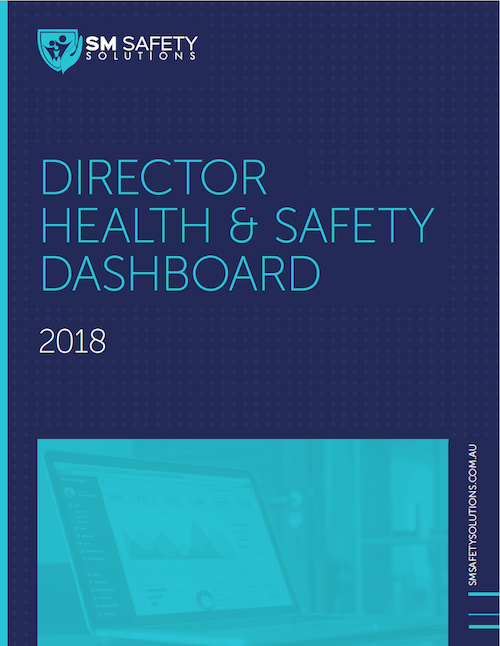
2018 Director Health & Safety Dashboard
This free download will outline CRITICAL WORKPLACE HEALTH & SAFETY matters from 2017 in the governance, business and regulatory landscapes that should be on every director’s radar in 2018.
• Introduction of industrial manslaughter in Queensland, Australia
• Sexual misconduct
• Director training in health & safety governance
• Introduction of qualifications for health & safety professionals
• Trust in decline globally
• Non-confirming building products
• Modern slavery
…And so much more!


2018 Director Health & Safety Dashboard
This free download will outline CRITICAL WORKPLACE HEALTH & SAFETY matters from 2017 in the governance, business and regulatory landscapes that should be on every director’s radar in 2018.
• Introduction of industrial manslaughter in Queensland, Australia
• Sexual misconduct
• Director training in health & safety governance
• Introduction of qualifications for health & safety professionals
• Trust in decline globally
• Non-confirming building products
• Modern slavery
…And so much more!
